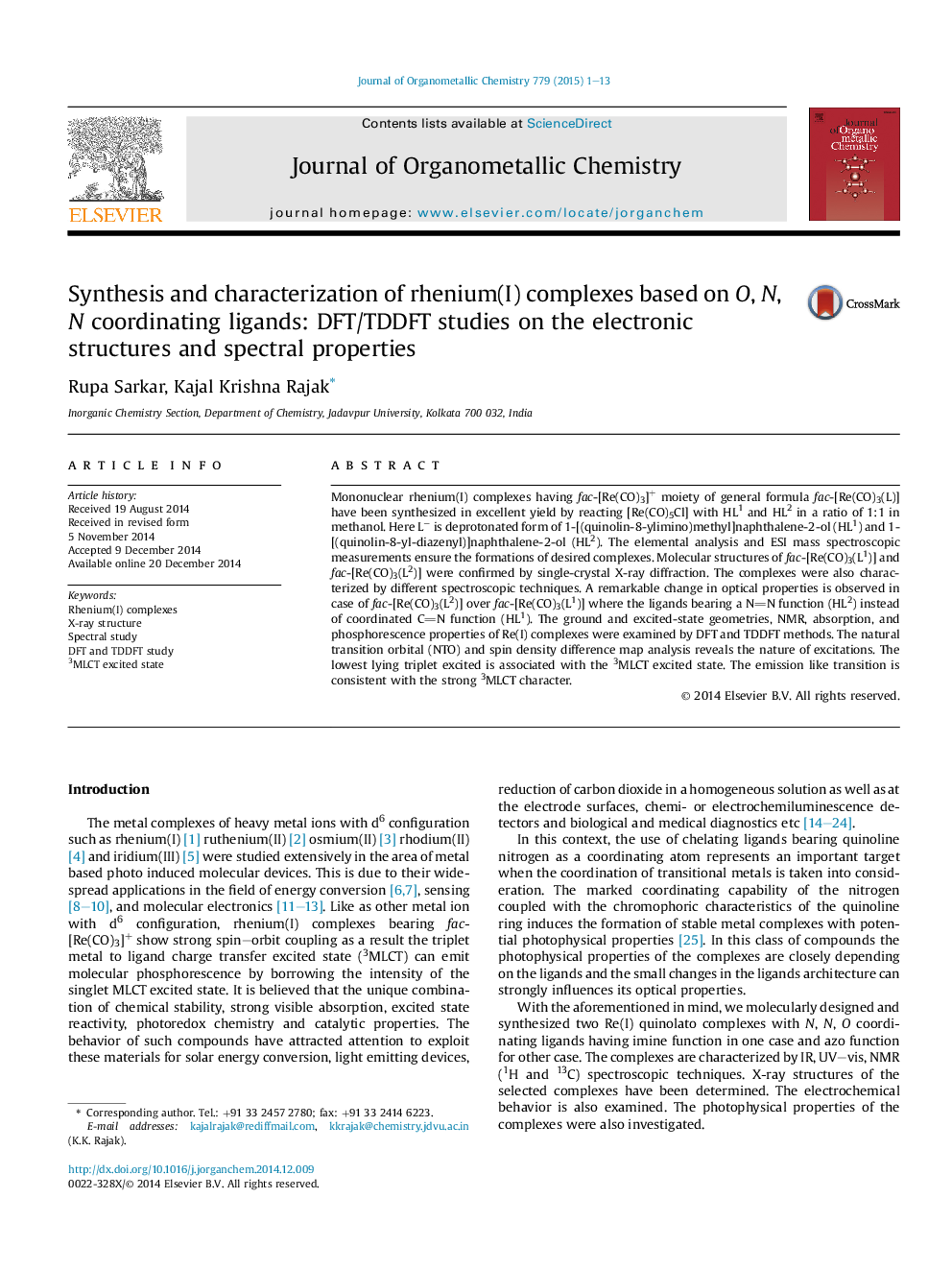| Article ID | Journal | Published Year | Pages | File Type |
|---|---|---|---|---|
| 1322142 | Journal of Organometallic Chemistry | 2015 | 13 Pages |
•Synthesis of rhenium(I) complexes with quinoline based O, N, N coordinating ligands.•Ligands HL1 and HL2 bearing imine function and azo function respectively.•UV−vis absorption band ∼110 nm red shifted incase of complex 2 with respect to complex 1.•Emission band is also observed at higher wave length in case of complex 2 which has azo moiety.•DFT calculation to correlate with experimental results.
Mononuclear rhenium(I) complexes having fac-[Re(CO)3]+ moiety of general formula fac-[Re(CO)3(L)] have been synthesized in excellent yield by reacting [Re(CO)5Cl] with HL1 and HL2 in a ratio of 1:1 in methanol. Here L− is deprotonated form of 1-[(quinolin-8-ylimino)methyl]naphthalene-2-ol (HL1) and 1-[(quinolin-8-yl-diazenyl)]naphthalene-2-ol (HL2). The elemental analysis and ESI mass spectroscopic measurements ensure the formations of desired complexes. Molecular structures of fac-[Re(CO)3(L1)] and fac-[Re(CO)3(L2)] were confirmed by single-crystal X-ray diffraction. The complexes were also characterized by different spectroscopic techniques. A remarkable change in optical properties is observed in case of fac-[Re(CO)3(L2)] over fac-[Re(CO)3(L1)] where the ligands bearing a NN function (HL2) instead of coordinated CN function (HL1). The ground and excited-state geometries, NMR, absorption, and phosphorescence properties of Re(I) complexes were examined by DFT and TDDFT methods. The natural transition orbital (NTO) and spin density difference map analysis reveals the nature of excitations. The lowest lying triplet excited is associated with the 3MLCT excited state. The emission like transition is consistent with the strong 3MLCT character.
Graphical abstractTwo mononuclear Re(I) complexes have been synthesized using two different O, N, N coordinating ligand. The complexes are isolated and characterized by different spectroscopic measurements. X-ray structures of two representative complexes have been determined. The electronic structure, absorption and emission spectra of the complexes were calculated applying DFT–TDDFT method.Figure optionsDownload full-size imageDownload as PowerPoint slide
